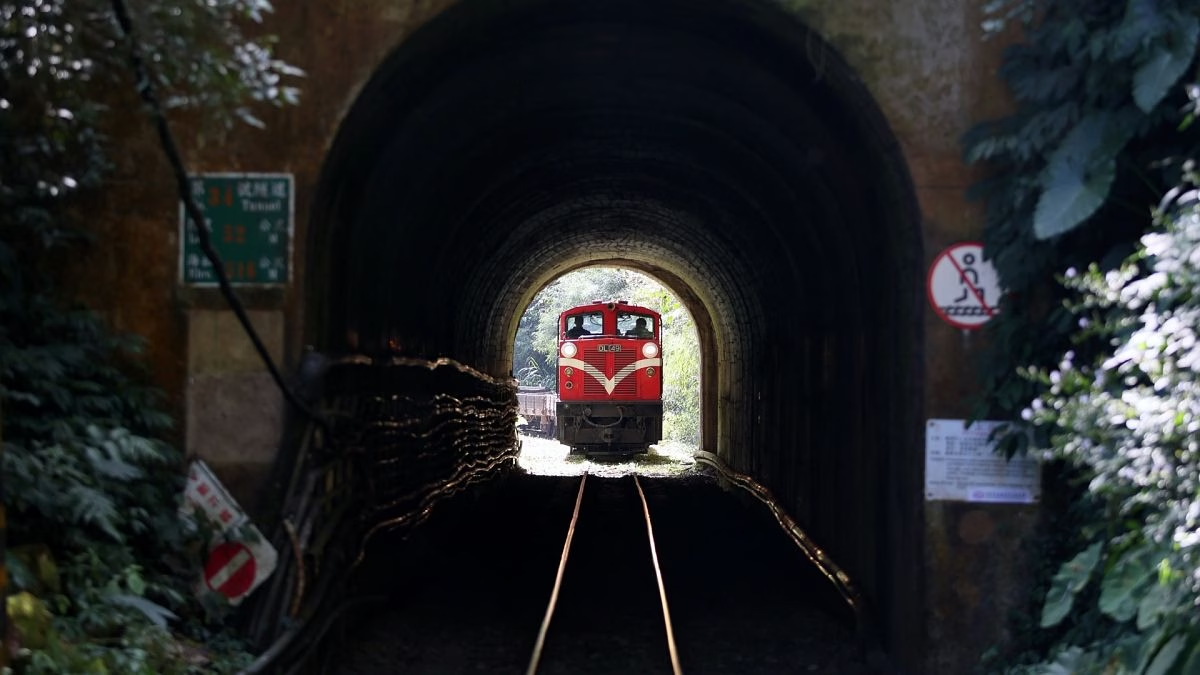As the sun pierces the clouds over the peaks of Taiwan’s Alishan range, I find myself on a historic steam train, a mode of transport that has journeyed through these alpine forests since 1912. The view from my window is enchanting, with rows of hinoki and bamboo flanking the line, cherished by the Indigenous Tsou tribe for various uses.
This region’s transformation began with the arrival of the Japanese after the first Sino-Japanese War in 1895, leading to significant forestry development. The perilous journey to establish this timber-rich railway illustrates an era of resilience and perseverance, hindered by natural calamities and resumed under the Taiwanese government’s steadfast effort in 1912.
Rumbling Through a Naturally Rich Heritage
Traveling along the recently restored 71-kilometer railway gives a glimpse into the challenges faced by the Japanese engineers. The line is a testament to enduring spirit, featuring intricate switchbacks, bridges, and tunnels, with one adorned with oversized sunflowers. US-built Shay locomotives helped transport timber and confront the region’s volatile climate, which claimed a heavy toll on the endeavor.
Chiayi, the railway’s starting point and once a bustling timber city, now hosts souvenir shops in the former quarters of railway and forestry workers. The decline in the 1960s and the devastating impact of Typhoon Morakot in 2009 halted operations, leaving the line in dire repair.
Reviving Taiwan’s Heritage Railways
The revival of the Alishan Forest Railway in 2024 is more than a story of renovation; it’s the resurrection of a cultural landmark. A visit to the train today is a journey through Taiwan’s living history, with carriages fashioned from fragrant cedarwood and stations resembling woodland temples.
The passing of a token from conductor to stationmaster is a reuse of history, a ritual echoing the railway’s past.
Heritage Renewed for Tourists
Immaculate stations like Jiaoliping reflect the community’s pride; the tracks have become a hub for hikers and tourists, replacing the original cargo. Visitors sample local delicacies, like turkey rice and oolong tea, in historical settings. Museums preserve the railway’s legacy, with relics showcasing its storied past.
A Summit Union of Nature and Modernity
The culmination of this heritage is the Zhushan Line, leading travelers to the highest train station in Taiwan. The renovation has paired rustic aesthetics with modern ingenuity, incorporating a giant cedar tree into the design and timing departures according to sunrise. The train’s half-hour journey to Zhushan Station mirrors the success of the entire railway’s story – resilient, meaningful, and open for the daily influx of passengers eager to witness the sunrise over Taiwan’s landscapes.
Despite setbacks, such as the recent onslaught from Typhoon Gaemi, the Alishan Forest Railway reemerged promptly, affirming its historic value and the profound efforts made to preserve this fragrant, tangible slice of Taiwan’s heritage. The restoration by hand signifies a love and respect for the past, ensuring that the railway’s legacy will endure.





